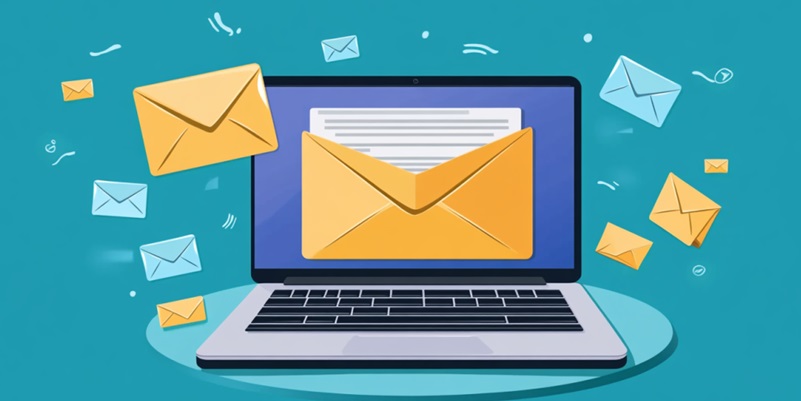Email marketing has been a stalwart in the digital marketing toolkit, historically offering astronomical returns on investment. Figures often touted suggest that for every $1 spent, marketers could expect $40 in return. However, the landscape is changing, and many are noticing a downward trend in email marketing ROI. This article delves into the factors contributing to this decline and offers actionable strategies to counter these challenges.
The Changing Landscape of Email Marketing
Enhanced ESP Authentication Requirements
The email ecosystem has become highly sophisticated, with Email Service Providers (ESPs) like Google, Yahoo, and Apple implementing rigorous authentication protocols. These measures are aimed at bolstering security and performance but can be a stumbling block for marketers. SPF, DKIM, and DMARC are now industry-standard protocol acronyms. They may seem technical, but they’re crucial in determining whether your email makes it to the recipient’s inbox or gets caught in spam filters.
Navigating Email Volume and Spam Filters
Spam filters have grown more stringent as ESPs strive to protect users from harmful content. Yet, these advanced filters sometimes ensnare legitimate emails, affecting their deliverability. A marketer’s domain reputation is now more important than ever, as recurrent issues can significantly harm your sender score. In addition to robust filters, the sheer volume of emails being sent globally contributes to the challenge. Every brand competes for consumer attention within crowded inboxes, making it difficult for even well-crafted emails to stand out.
Regulatory Challenges: Data Privacy Laws
Understanding GDPR and CCPA
The advent of stringent data privacy regulations such as the General Data Protection Regulation (GDPR) and the California Consumer Privacy Act (CCPA) has added layers of complexity to email marketing. These laws confer significant rights on consumers regarding their data, leading to increased compliance costs for marketers. Under GDPR, for example, consumers must expressly opt-in to receive marketing emails, forcing marketers to rethink their strategies around data collection and management. CCPA mandates similar precautions, requiring transparency around data usage and giving consumers the right to opt out.
Compliance Costs and Marketing Scope
The financial burden of compliance isn’t negligible. Companies must invest in legal counsel, data management software, and staff training to avoid hefty fines. Beyond the monetary costs, the restrictions imposed by these regulations can limit the scope and effectiveness of email campaigns. Moreover, gaining and maintaining opt-ins becomes more challenging as consumers become more aware of their rights. This complicates not just the acquisition process but also the ongoing engagement strategies necessary to keep audiences interested and informed.
Poor Quality Cold Contact Lists
The Pitfalls of Purchased Email Lists
One of the quickest ways to damage email deliverability is by relying on low-quality email lists. Purchased lists are notorious for having outdated, incorrect, or non-consensual data. These lists often lead to high bounce rates, which spam filters take as a red flag, potentially marking your domain as suspicious. Marketers may be tempted by the instant audience that purchased lists promise, but the long-term damage can severely outweigh the short-term gains. High bounce rates and low engagement can tank your sender reputation, making it increasingly difficult to reach anyone at all.
Building High-Quality Lists
The solution to this problem lies in organically building high-quality lists. While it’s time-consuming, the benefits far outweigh the initial effort. Use opt-in forms strategically placed on your website, landing pages, and social media platforms. Offer compelling reasons for users to subscribe, such as exclusive content or early access to new products. Using double-opt-in mechanisms can further ensure that the addresses on your list are valid and truly interested in your offerings.
Consumer Email Fatigue
The Impact of Oversaturation
Email fatigue is a growing concern among consumers inundated with marketing messages. Inboxes cluttered with promotions, discounts, and newsletters lead to disengagement and higher unsubscribe rates. The sheer volume of marketing emails diminishes their impact, creating a more challenging environment for marketers. It’s essential to recognize that consumers are now more selective about the content they engage with. Irrelevant or overly frequent emails can quickly lead to burnout, pushing valuable contacts towards the ‘unsubscribe’ button.
Crafting Value-Driven Content
To combat email fatigue, marketers must focus on creating value-driven content. Personalization goes beyond just inserting a first name into a template. It involves understanding the recipient’s interests, behaviors, and needs to deliver content that truly resonates with them. Segmentation is key. Divide your email list based on different criteria such as demographics, past purchase behavior, and engagement levels. This allows you to tailor your messages more accurately and increase the chances of meaningful interactions with your audience.
Ease of Unsubscribing
Regulatory and User Experience Factors
Email marketing has long been a cornerstone of digital marketing, known for delivering impressive returns on investment. Traditionally, data has shown that for every dollar spent on email marketing, businesses could expect about $40 in return. However, recent trends suggest a shift in this once promising ROI, with many marketers observing a noticeable decline.
This article explores the various factors contributing to the diminishing effectiveness of email marketing campaigns. Changing consumer behavior, increased competition in inboxes, and evolving privacy regulations are some of the key issues impacting performance metrics. Additionally, the rise of alternative marketing channels such as social media and influencer partnerships plays a role in this decline.
Despite these challenges, there are actionable strategies marketers can employ to rejuvenate their email marketing efforts. By focusing on personalized content, improving segmentation, and leveraging data analytics, businesses can better engage their audience and enhance their ROI. Furthermore, adopting innovative approaches like interactive emails and integrating social elements could help to revitalize this once dominant marketing tool.

